Genre: Sports Developer: Sega Enterprises Publisher: Sega Enterprises Players: 1-2 Released: 1990
You’d think that a game that describes the sport of football as being so violent and destructive, humans are no longer allowed to play, things would actually be more, well, violent and destructive. When I think of a sport that features robots duking it out on the field, I’m thinking of carnage, plain and simple. Something akin to the NES classic Base Wars springs to mind. Now there was a game with some pissed off robots! Considering that it was about baseball – a sport nowhere near as full contact as football – it was pretty brutal, with its one-on-one combat sequences. You knew that when someone was going to try to steal a base, they were in for a fight.
Sadly, Cyberball is significantly more… subdued. There’s violence to be found, but it seems so muffled compared to other examples in the genre. Released by Atari in arcades in 1988 and reprogrammed for the Genesis two years later, Sega did a pretty accurate job of bringing the whole experience home, sans the massive cabinet and with some graphical compromises. As ports go, Cyberball is another excellent example of Sega’s masterful reprogramming of would-be third party games to the Genesis (along with a slew of Capcom greats like Forgotten Worlds, Strider, MERCS, and Ghouls ‘N Ghosts). The problem is that the original package was originally intended to get you to pour quarters for a few minutes’ worth of play, and the no-frills gameplay doesn’t translate all that well to a home console.
Essentially, you take charge of a robotic football team in the year 2022. The rules of football have been greatly simplified since human participation was forbidden. The ball itself is now a ticking bomb that heats up with each play, and the only way to diffuse it is to get it across the fifty yard line, turn the ball over on downs, or to score a touchdown. The only other way to score (besides a mandatory two point conversion) is by safety; and defensive plays have been divided into short, medium, and long – quite simple for someone not familiar with an NFL playbook.
Field goals and punts are gone, so it’s either move the ball or watch someone go “boom!” Each player you lose, be through an exploding football or a particularly nasty hit, costs money to replace, and your cash will dwindle quickly unless you score touchdowns. Your players wear down with each successive tackle, eventually billowing smoke as a sign that the next hit will spell their end. This can be especially problematic when the player destroyed is the one holding the ball, as his untimely demise causes an immediate fumble! Luckily, having your QB or any other team mate turned into scrap metal doesn’t affect the flow of the game, as the rubble is quickly cleared from the field, and a new player is beamed down into position before each play. You can even buy an upgraded player on the spot while choosing your play! If only the NFL could do that!
The game has taken a significant blow in terms of presentation, as the graphics have lost what little power they had in the arcade. Gone are the crowd and the “CYBERBALL” logos in each end zone, but more importantly the robots themselves aren’t as detailed as they should be. As each position features a different type, you’re hard pressed to see much distinction among them other than the fact that linemen simply have bigger sprites than the others, and the quarterback is tall and thin. The field itself is bare (no yard line numbers, even), and the repetitiveness of the single, solitary music track is enough to make you reach for the mute button. Believe me, you wouldn’t be missing much in terms of audio, as what few sounds there are can be considered forgettable.
Another potential problem is the management of the clock. Any football fan knows that this is vital to maintaining a slim lead or for mounting a comeback in the last quarter. Cyberball has upped the amount of quarters to six instead of the traditional four, so the game would seem to be much longer, right? Wrong. Sega decided to retain the lightning-fast clock of the coin-op, which was great for ending games quickly for increased profit in arcades but complicates things on the Genesis. There are no longer four standard downs, and since you don’t have to punt you can basically hold on to the ball for much longer now. This makes keeping a slim lead that much harder, but in turn allows losing players more chances to catch up.
The computer A.I. ranges from ridiculously easy (NY wins 40-0 against SF!) to jaw-droppingly cheap. Nothing says “I love you” like an interception on the one-yard line that’s returned for a touchdown – with four seconds on the clock – and costs me the game. You can adjust the difficulty level, so thankfully it’s not a deal-breaker. A password option lets you return to the action at your leisure, since you can only play tournament and versus mode. No exhibition games here, but you don’t really need them anyway.
It’s not all negative though. I mentioned that this was another example of Sega’s great reprogramming, and like the other titles the company handled, Cyberball features some gameplay extras to make up for its technological shortcomings. The playbook has been significantly enhanced over the original, and you now have many more plays from which to choose. The whole game also uses a single button, so there’s no real learning curve of which to speak. I do wish that the American version had found a way to retain the modem option of the Japanese game. The slow pace of Cyberball would have made it a perfect fit for Catapult’s Xband service, but I guess I’m just dreaming now, right?
With the immense amount of football games available on the Genesis, diehard fans should look elsewhere for their thrills. On the other hand, those wanting to just toss the ball around and maybe smash a few things in the process should give Cyberball a chance. Complete games can be had for peanuts on eBay, and it’s a decent enough way to pass an afternoon, provided you don’t really have much else to play.
SCORE: 5 out of 10

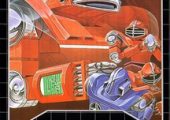
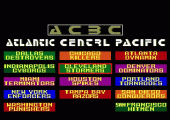
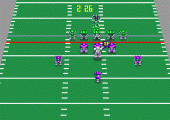
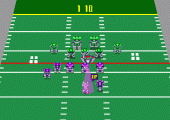
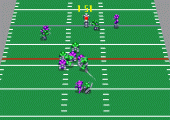
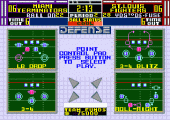
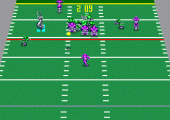
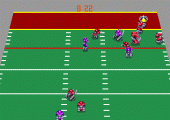
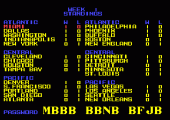
Recent Comments